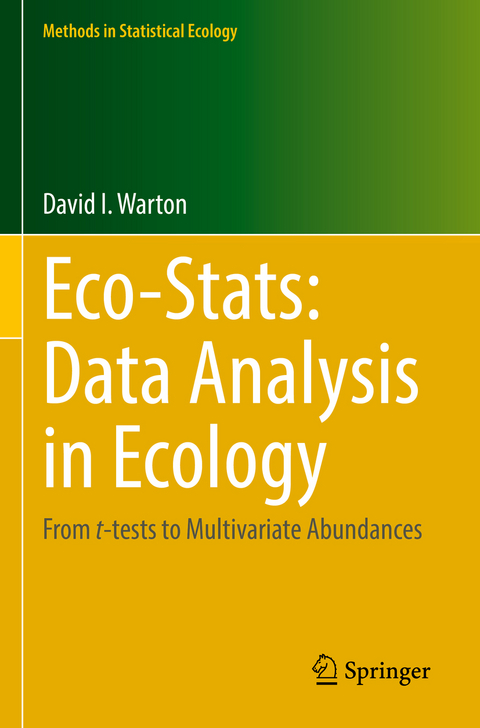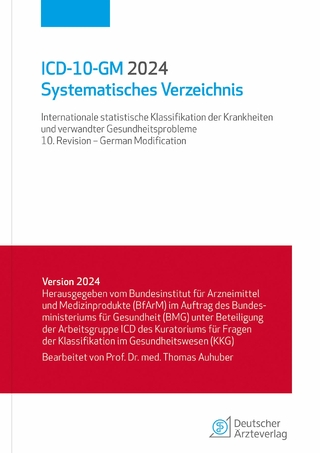
Eco-Stats: Data Analysis in Ecology
Springer International Publishing (Verlag)
978-3-030-88445-1 (ISBN)
This book introduces ecologists to the wonderful world of modern tools for data analysis, especially multivariate analysis.
For biologists with relatively little prior knowledge of statistics, it introduces a modern, advanced approach to data analysis in an intuitive and accessible way. The book begins by reviewing some core principles in statistics, and relates common methods to the linear model, a general framework for modeling data where the response is continuous. This is then extended to discrete data using generalized linear models, to designs with multiple sampling levels via mixed models, and to situations where there are multiple response variables via model-based approaches to multivariate analysis. Along the way there is an introduction to: important principles in model selection; adaptations of the model to handle non-linearity and cyclical variables; dependence due to structured correlation in time, space or phylogeny; and design-based techniques for inference that can relax some of the modelling assumptions. It concludes with a range of advanced topics in model-based multivariate analysis relevant to the modern ecologist, including fourth corner, latent variable and copula models.
Examples span a variety of applications including environmental monitoring, species distribution modeling, global-scale surveys of plant traits, and small field experiments on biological controls. Math Boxes throughout the book explain some of the core ideas mathematically for readers who want to delve deeper, and R code is used throughout. Accompanying code, data, and solutions to exercises can be found in the ecostats R package on CRAN.
lt;b>David Warton is professor and leads the Eco-Stats group based in the School of Mathematics and Statistics and is affiliated with the Evolution & Ecology Research Centre at the University of New South Wales (Australia). He is an ecological statistician who advances methodology for data analysis in ecology and is one of quantitative ecology's great explainers. He has an unerring knack for identifying core concepts and packaging them in comprehensible ways.
1. "Stats 101" Revision.- 2. An important equivalence result.- 3. Regression with multiple predictor variables.- 4. Linear models - anything goes.- 5. Model selection.- 6. Mixed effects models.- 7. Correlated samples in time, space, phylogeny.- 8. Wiggly Models.- 9. Design-based inference.- 10. Analysing discrete data.- 11. Multivariate analysis.- 12. Visualising many responses.- 13. Allometric line-fitting.- 14. Multivariate abundances and environmental association.- 15. Predicting multivariate abundances.- 16. Explaining variation in response across taxa.- 17. Studying co-occurrence patterns.- 18. Closing advice.
| Erscheinungsdatum | 15.08.2023 |
|---|---|
| Reihe/Serie | Methods in Statistical Ecology |
| Zusatzinfo | XII, 433 p. 137 illus., 109 illus. in color. |
| Verlagsort | Cham |
| Sprache | englisch |
| Maße | 155 x 235 mm |
| Gewicht | 676 g |
| Themenwelt | Informatik ► Weitere Themen ► Bioinformatik |
| Mathematik / Informatik ► Mathematik ► Wahrscheinlichkeit / Kombinatorik | |
| Naturwissenschaften ► Biologie ► Ökologie / Naturschutz | |
| Schlagworte | animal density • Bootstrapping • Ecology • estimation • Generalized Linear Models • linear regression • mixed models • Model Selection • multivariate analysis • numerical ecology • Population • Quantitative ecology • Sampling • Statistical Ecology • Survey |
| ISBN-10 | 3-030-88445-7 / 3030884457 |
| ISBN-13 | 978-3-030-88445-1 / 9783030884451 |
| Zustand | Neuware |
| Haben Sie eine Frage zum Produkt? |
aus dem Bereich


